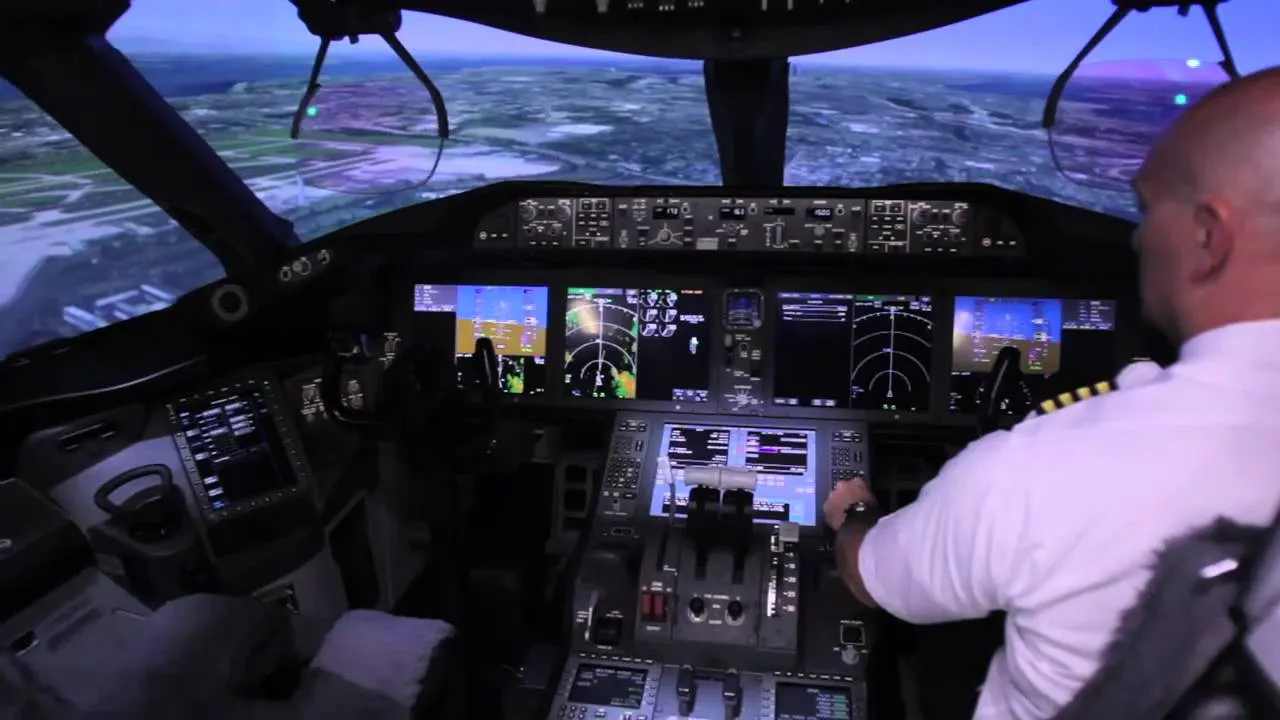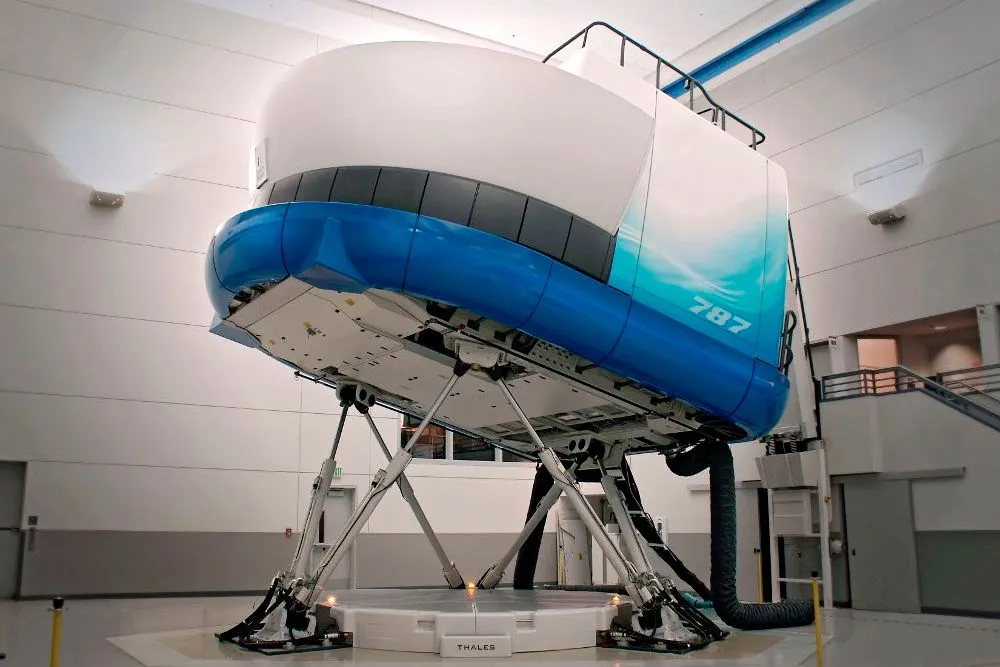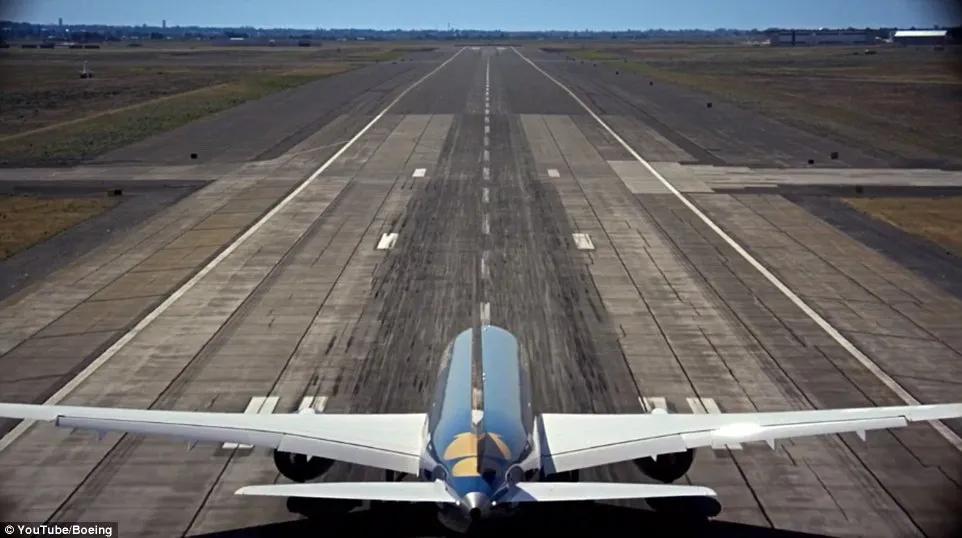
The simulator sessions pilots have to do every year or every 6 months, are there to enable pilots to show off the skills they have accrued over the years and continued ability to fly the airplane efficiently, proficiently and safe.
Not everyone enjoys these sessions as in any job you might be flying with people you have less connection with in a highly stressful environment.
Luckily in the airline world we use "SOP's" which are standard operating procedures, these allow us to operate together whilst not knowing each other. I will come back to that later.
glorified busdrivers
We often get compared to glorified busdrivers, but if you had a few days in the sim, you soon find out there is more to flying then just taking off and landing.
Nothing against the profession busdrivers, but when someone says you are a glorified Busdriver it means that they think that there is not much more to it then driving a bus.
Clearly a negative sneer towards our profession although I never understand why someone would make a comment like that.
I see any profession or job, as something on it's own, what use is comparing them anyway?
I am by all means not saying that driving a bus is easier then flying a plane (the act of handling any vehicle can be challenging at times), I let you be the judge of that, however I do believe the managing skills and decision processes involved with flying a plane is why a comparison between a bus and a plane is a non-starter.
Let alone the fact that an airplane flies in a very hostile environment of -60 degrees, low pressure at speeds close to the speed of sound. Try doing that with a bus.
I don't usually see a reason to defend my profession but I thought I mention it anyway 😄.

Yesterday was my last day in the simulator and I am now checked out again for a year.
To give you an example of what we go through on a typical 3 day session I will start at day 1.
Day 1
Generally Day 1 is judgment day, we have to fly the aircraft in low visibility procedures and do a couple of failures in bad visibility scenarios.
This will allow us to do autolandings in the airplane after we showed we can deal with the different yoes of failures that could degrade the automated systems to different types of levels of automation with each a minimum of level of visibility required.
With the 787 we can autoland the plane with 75 meters visibility, as long as the airport has the required facilities.
To do an autoland the aircraft requires backup systems to work and also the airport has to have "low visibility procedures" in force in order to give the protection required to the signal the automated systems use to lock on to. (ILS signal)
Also after landing and before take off we have to find resp. our stand or runway and whilst one pilot is taxiing the other has to monitor that they are going the right way. This is easier said then done in a mu,ticrew environment, as some of the taxi instructions and signs on the runway are not very clear.

After some go arounds due to technical failures we then end up doing a full (cat 3b) landing, which is basically with hardly any visibility.
Reject on Takeoff
We then also have to show our capability to reject a take off at different speeds.
Before taking off we do performance calculations based on the weight of the aircraft, the outside weather conditions and technical problems the aircraft may have.
With these calculations we calculate speeds that will help us in our decision making during the take off.
80 kts
When we initially take off we have an important speed (80 kts).
Before we reach that speed if anything unusual happens to the aircraft, for instance a system(s) failure, we will reject.
This is done by closing the thrust levers, pulling the reversers and raising the speedbrake(happens automatically) and disengaging the autothrottle.
The aircraft automatic brakes will not be working at these speeds even though the rejected take off position is selected.
The captain usually makes the decision to reject, the first officer then becomes pilot monitoring and makes sure the captain carries out all required procedures.
Also telling air traffic that they are stopping on the runway with the correct phraseology.
Depending on the scenario whether it is a fire or something less prudent a decision is then made to either evacuate or not.
Cabin crew and air traffic control and fireservices will be spoken to.
The instructor doing the testing stands behind us and makes notes on what we did well and what could be improved.
Or if you showed unsatusfactory performance you would have to do a retake.
after 80 kts but before v1
Between these speeds we stop for only 4 things
- any fire or fire warning
- any engine failure
- predictive windshear
- airplane unable or unsafe to fly
In this case above 85 kts the autobrakes will apply a force to brakes which can be very violent as the power of the braking system is very impressive ont he B787.
All other scenario's we will continue into the air with as making a reject decision at high speed will have more risk (risk of running off the runway due to lack of stopping distance) then dealing with the problem into the air.
v1 and after
V1 is the calculated speed by which already a decision should be made to reject, if the pilot not flying (pilot monitoring) calls V1, the aircraft should not be stopped for anything as there will most likely not be enough distance to stop the aircraft.
Generally they simulate an engine failure/ engine fire or severe damage exactly after V1 so that the failure happens on the ground.
This causes the airplane to swing to the side where the engine has failed, the pilot has to use rudders (pedals) and ailerons and elevator ( steering wheel and control collumn) to aircraft from running to the side of the runway and get it off the ground at a correct rate of rotation.
Rotation hallens when the pilot monitoring or the aircraft itself calls "Rotate"
V2
we slowly rotate 2 degrees per second or so to an artificial line in the head up display and try to maintain straight and level flight with thrust being assymetric as one side has failed.
We get the gear up, and make sure we pitch correctly so that the speed doesn't drop below V2.
V2 is the lowest speed that the aircraft can safely bank 30 degrees on one engine before getting close to a stall.
We then identify the failure and carry out items that have to be done immediateky (memory items)
In case of an engine fire we must try to exstinguish it so we methodically identify which engine is on fire as switching off the wrong one is a disaster.
(http://abcnews.go.com/International/engines-lost-power-transasia-crash-aviation-official/story?id=28769196)
memory items of engine fire will be
-Autothrottle of the affected engine...... confirm.....off
-Thrust lever affected ... confirm....... engine idle
-Fuel control to cut off ...... confirm...... off
-Engine fireswitch to pull and rotate..... confirm ....
After that we throw out a mayday 3x or panpan 3x call depending on the severity of the situation.
At all times we have to prioritize flying and navigating the aircraft first (aviate, navigate) we then climb up to the acceleration altitude dependant on terrain and turns we start accelerating (aircraft has half the power so everything takes longer)
We then select flaps 1 and flaps up.
We probably aim for a holding pattern so we can deal with the required checklists.
Once that is done we gather information on the weather at different airports the facilities if we can land on it in terms of performance. After discussing the options we make a decision.
We go through what can be called a GRADE loop.
We Gather information, Review it, Analyse it, Decide, Evaluate.
Then we talk to air traffic with our intentions the cabin crew and the passengers.
After that we have to setup the airplane for an approach do the required checks for that and do a briefing on which modes you willl be using and what type of configuration will be flown. Also whether dumping of fuel is required or whether there is enough fuel for a goaround to make another landing.
Followed by the descent and approach checklist. We then tell air traffic that we are ready for the approach and want the fireservices to meet us as oil/ hydraulic fluid might have been sprayed on the landing gear and could potentially catch fire.
We also tell the cabin crew to prepare for a precautionary landing which means they monitor the situation and look for people that could assist in a possible evacuation. 99% of the times an evac is not necessary but we have to be prepared.
When we do the approach the weather then is lowered as we then have to show our ability to fly a go around on one engine within certain parameters followed by a visual landing.
After we done this the other pilot has a go at the same scenario.
We are also being tested on our standard operating procedures, they are standard calls we make during different phases of the flight which allows to better monitor each other. For instance if we are climbin to FL 180 and we pass FL170 the pilot monitoring has to say "a thousand feet to level off" to which the pilot flying responds "check" If he doesn't say it, the other guy has to respond check. This way we monitor each other as when stress levels go high people might make more mistakss in the standard operating procedures and we can try to offload them by taking up more tasks.
It also allows people to fly with each other who have never flown together before as every phase of flight has it's own calls and responses so we know what to expect from eachother in a highly dynamic and changing environment.
This then generally completes Day 1 which takes 4 hours in the sim.
After the end of the day you will get graded and as a first officer particulary they look at your ability to become a captain so obviously there is a lot of pressure on you to do well.
Generally the worst enemy in the sim is yourself as losing confidence or getting annoyed by mistakes made could add up in diminishing your own performance so you have to be able to keep your head clear at all times.
Day 2 and Day 3 often differ they target areas that are higher risk and tend to simulate scenario's that could happen on the line.
Decompressions/ smoke and fire in cargo/ aircondition pack failures/ unusual attitudes (flying a Boeing upside down and recover it)
Engine failures over the atlantic ocean, more single engine flying.
Windshear scenario's or flying close to terrain or other traffic (TCAS)
Most of this will be training and development but we are also being graded on it.
Flying nowadays is more about managing and structurizing issues in an appropriate manner. Recognising the urgency levels.
Sometimes it is better to slow down then rushing into a decision as it is easy to overlook the big picture.
On an airplane there are few scenario's that require immediate action.
In the end a captain on a 787 is ultimately responsible for the multi-million dollar business he is operating (Cost of buying a 787 is 230 million dollar).
If anything goes wrong, all manuals mention that the captain is responsible for the safe operation of a flight, so by that has a huge responsibility on his or her shoulders.
Long story, if you got this far I hope it gives you a better idea of what is happening in the simulator.
In my company we are now being tested once a year, 3 days 4 hour sims and we get a Line-Check every 2 years, whereby you fly from A to B on a real flight and your handling and general operation of the aircraft get's graded.
The performance of every pilot is being monitored and people that fail items too often might get more simulator sessions.
As you can imagine the above can be quite stressful, on the otherhand it gives a great feeling when you had a good session.

So now that I have my license approved again for a year, in two days time I am flying to the beautiful Punta Cana (Dominican Republic).
Safe travels everyone!